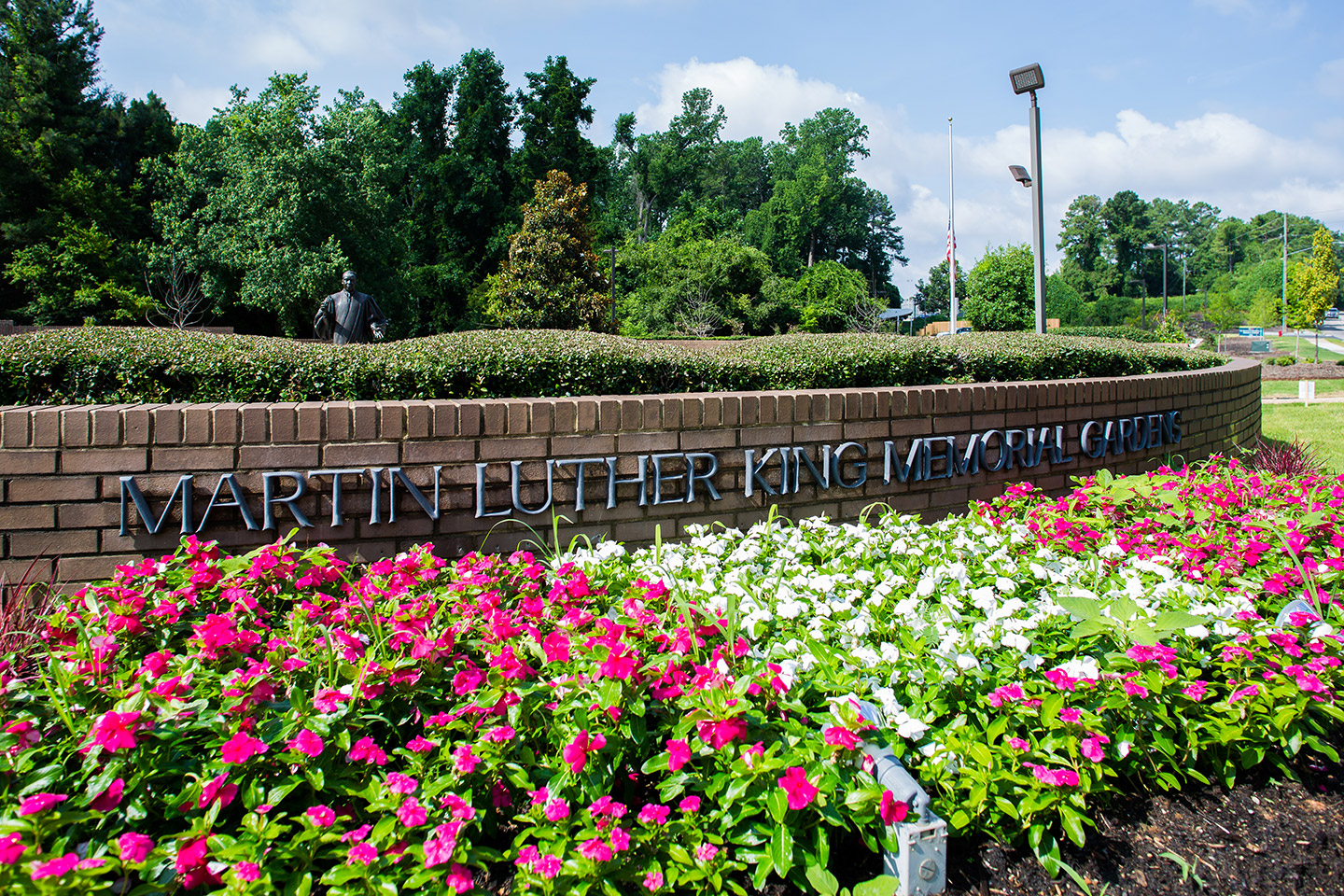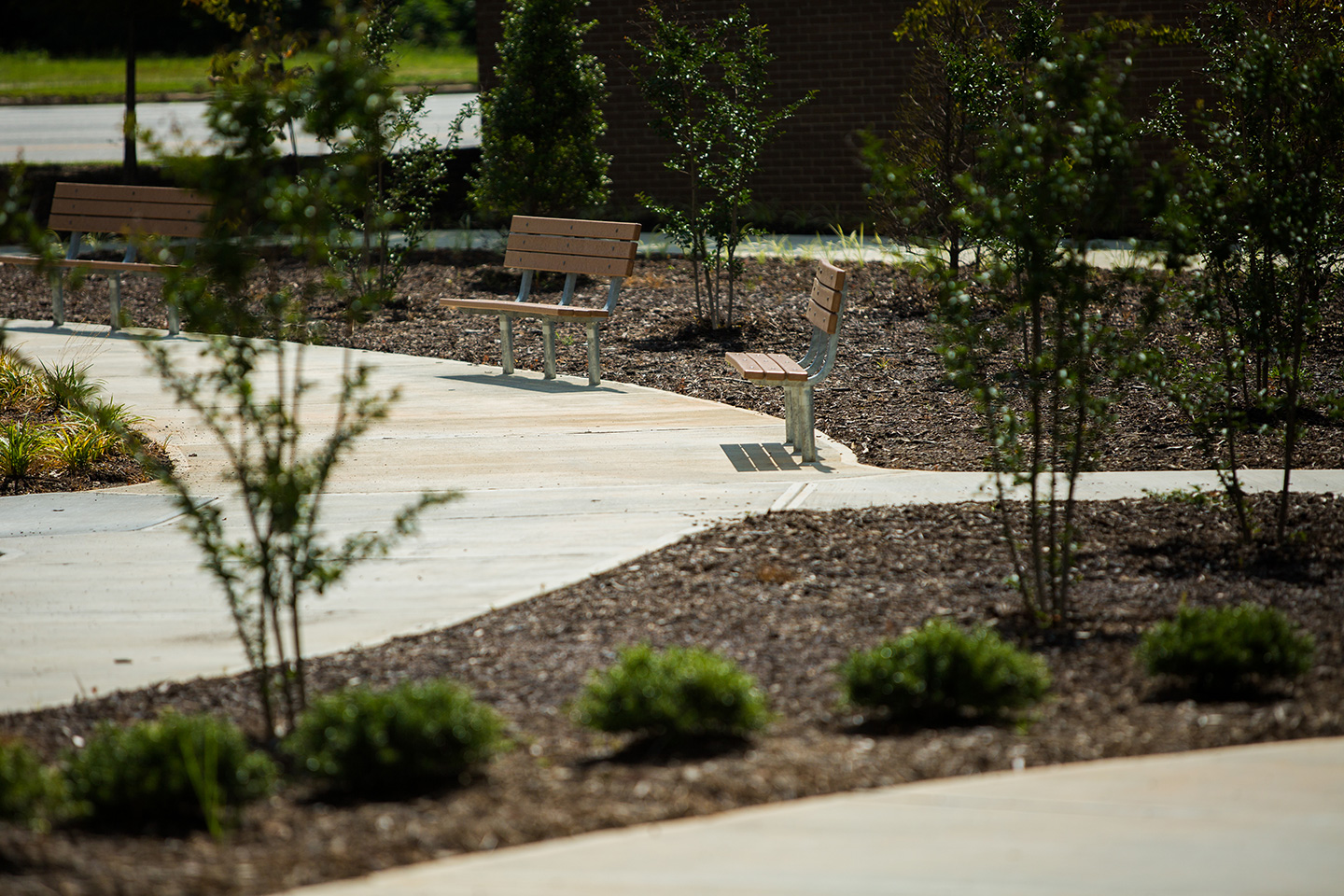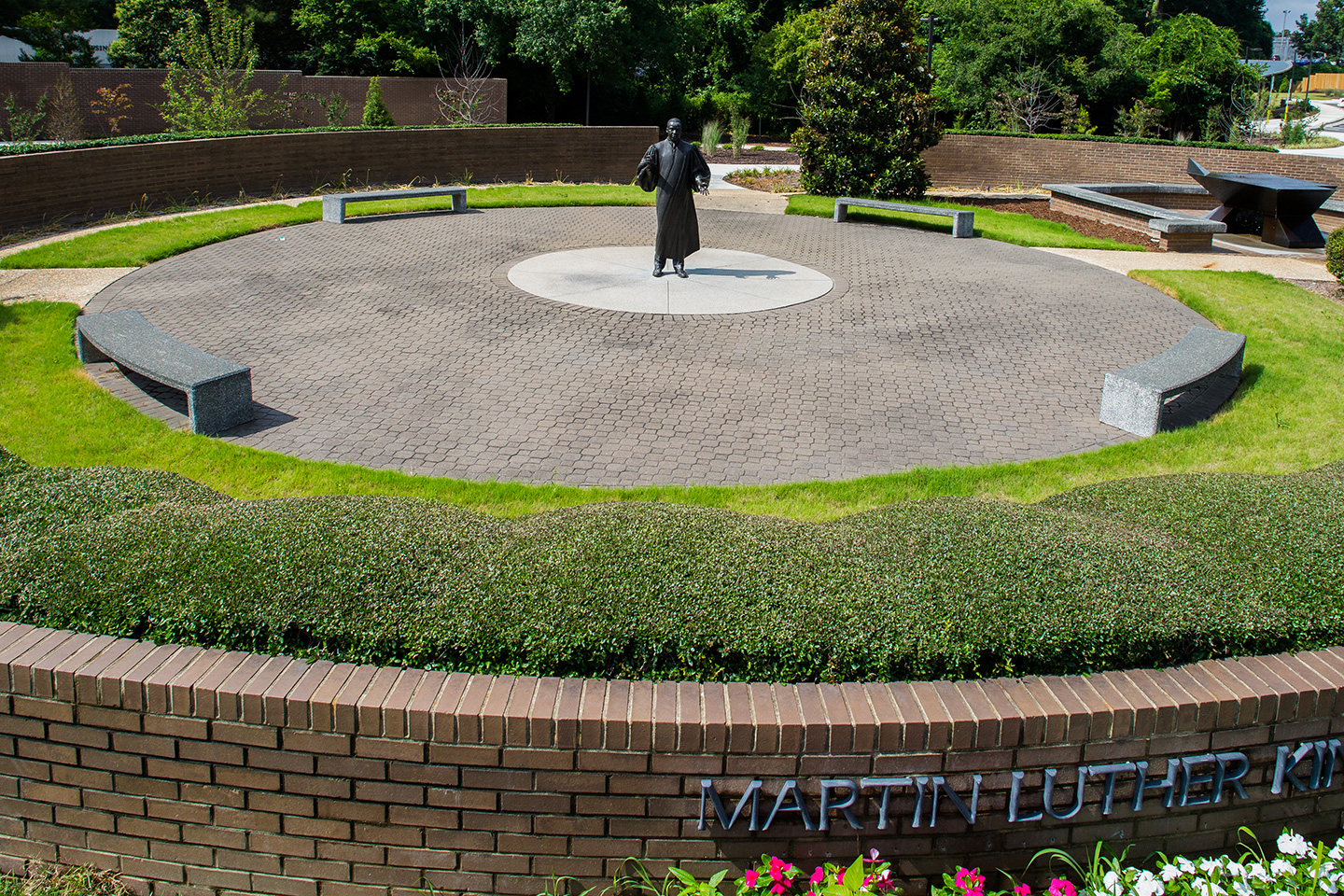The Dr. Martin Luther King Jr. Memorial Gardens was one of the first public parks in America dedicated solely to the memory of Martin Luther King Jr. and the civil rights movement. The idea for the memorial gardens developed as a result of local black neighborhood leaders gathering support and preparing a concept plan with the help of a landscape architecture firm. The City of Raleigh was planning to build a connecting road through town, which would eventually become known as Martin Luther King Jr. Boulevard. The MLK committee proposed using a 1.0 acre tract of land at the intersection of Martin Luther King Jr. Boulevard and Rock Quarry Road into a memorial. This effort was spearheaded by Mayor Clarence Lightner, the first Black mayor of Raleigh. I first started work during the initial phase of construction in the 1980s until the project's completion in 1990 after I joined Dewberry.
The initial work was done pro bono, with the local community of church members and businesses coming together to fund the memorial gardens to be built. A committee was then formed to plan the statue to honor King, with Coretta Scott King herself coming to Raleigh and approving the bronze statue. The King family was involved in the process every step of the way, so that he was honored the “right way.”
The second phase of the project was completed in 2016, when Dewberry updated the memorial gardens to be fit for celebrations. We provided construction administration and closeout services for upgrades to the park. The updates included the addition of extra acreage, a comfort station, a pavilion, redesigned parking, and an enlarged pedestrian plaza.

Future Interactive Design Elements
The master plan for some future improvements at the memorial gardens include two interactive elements. The first uses the 10-foot masonry wall built behind the statue as a multi-use screen where the City of Raleigh can display messages on the wall. For example, the wall could be used to celebrate Black History Month in February, the Fourth of July, and other events.
The second uses the plaques already placed at the memorial gardens to make an interactive map of Black history in the Raleigh area. The plaques represent people who’ve been a part of the cultural movement in Raleigh. The interactive element planned would be to use your phone to interact with the path that would tell the story of civil rights within Raleigh, from the 1800s to present day.

How the Memorial Gardens Impact Me
This memorial has been supported by the local community from the beginning and now it’s turned into something that’s going to live on for a long time and touch a lot of people. It means a lot to me too, as a native North Carolinian, to know our capitol was one of the first to recognize the accomplishments of Dr. Martin Luther King Jr.
When I drive by the gardens, I pull into the parking lot and go to sit on one of the benches. I then watch people come up and interact with the sculpture. I think about Abbe Godwin, the designer of the bronze statue of King and how smart of her it was to design it based on his work before he became famous as an activist. Prior to becoming an activist, King was a preacher. The statue is designed with King’s hand and arm facing out like he’s greeting people after a church service.
I’ve often reflected on the work that I’ve accomplished. Completing a project like this made me want to continue in the profession of landscape architecture and build upon my growth in improving my local community.
This memorial has been supported by the local community from the beginning and now it’s turned into something that’s going to live on for a long time and touch a lot of people. It means a lot to me too, as a native North Carolinian, to know our capitol was one of the first to recognize the accomplishments of Dr. Martin Luther King Jr.”
Dennis Pitts
